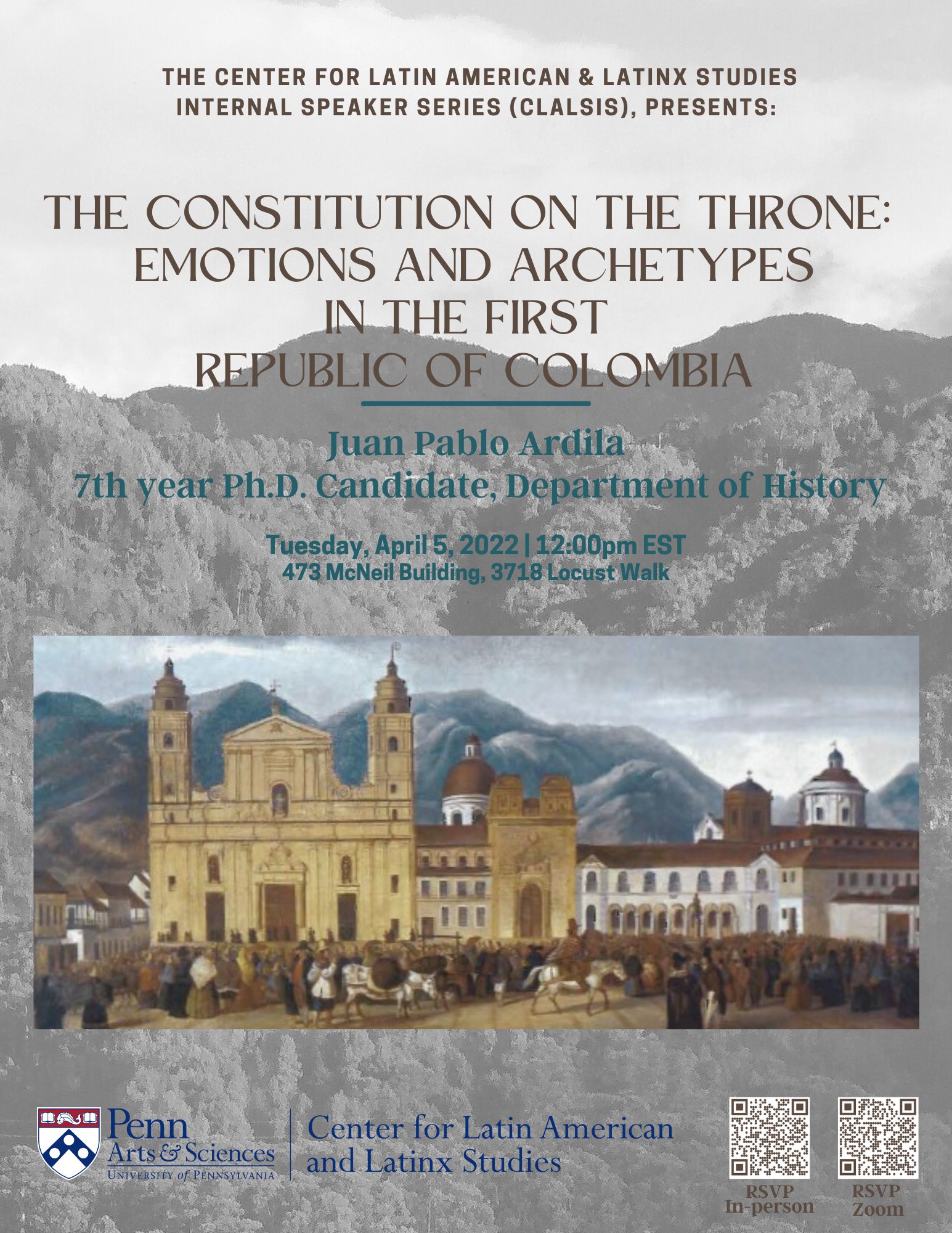CLALSIS

Join us and our speaker Juan Pablo Ardila, who will present his dissertation epilogue. Please feel free to read ahead the text, following this link.
Abstract
On December 2, 1821, Bogotá’s residents gathered in the city’s main square to acclaim the recently enacted Cúcuta Constitution. That day, Bogotá’s councilmen marched into the main square carrying a standard of Bogotá with a constitution hanging from its rod. They walked up to a throne set in the middle of the square and carefully placed the standard and the constitution on the throne. They then picked up the charter and read it aloud. Once they finished reading the text, the crowd cheered “long live the sacred constitution of the Republic of Colombia.” Similar to the meanings it brought about in monarchical regimes, the throne sought to bestow the constitution with a certain sense of authority, legitimacy, and sacredness.
In the 1820s, the inhabitants of the newly formed republic strategically looked back to monarchical representations of power, to colonial social hierarchies, and to past events to give meaning to the times they were living. Archetypes and mental images coming from previous decades fed and informed political and social tensions at the same time that they guided and shaped people’s emotions. Mental images of prior symbols of power or of bygone notions of society brought about emotions and emotional expressions associated to those particular archetypes. Drawing on William Reddy’s notion of “emotives” – and expanding on its implications – this paper discusses how mental images hailing from the Old Regime gave form not only to the main debates of the time, but also to the ways in which emotions were experienced, expressed, and understood.

 Center for Latin American and Latinx Studies
Center for Latin American and Latinx Studies